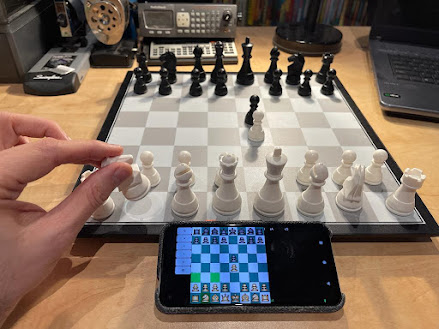Fidelity Electronics Chess Challenger
As long as I am making a trip down to memory lane, I remember how happy I was when I got a Chess Challenger for my birthday in 1981. As a starting young chess player, I certainly learned a lot from playing this computer, and I was thrilled when I had beaten the highest level for the first time. It certainly has sparked my interest in chess programming.
After playing for a while, I discovered that if Chess Challenger responsed to e2-e4 with e7-e7 from its random opening book, it could always be beaten at Level 1 through the game shown below. As depicted on the corresponding photo, the Chess Challenger would admit its defeat by flashing all 64 red indicators.
Although modern chess software is much more practical, it lacks some of the charm of those early day chess computers.
After playing for a while, I discovered that if Chess Challenger responsed to e2-e4 with e7-e7 from its random opening book, it could always be beaten at Level 1 through the game shown below. As depicted on the corresponding photo, the Chess Challenger would admit its defeat by flashing all 64 red indicators.
[Date "sometimes in 1981"] [White "a much younger Aart Bik"] [Black "Chess Challenger (Level 1)"] [Result "1-0"] 1. e4 e5 2. Nf3 Nc6 3. Bb5 a6 4. Bxc6 dxc6 5. Nxe5 Qd4 6. Qh5 Qxe4+ 7. Kd1 Qxg2 8. Qxf7+ Kd8 9. Qxf8# 1-0
Although modern chess software is much more practical, it lacks some of the charm of those early day chess computers.



Comments